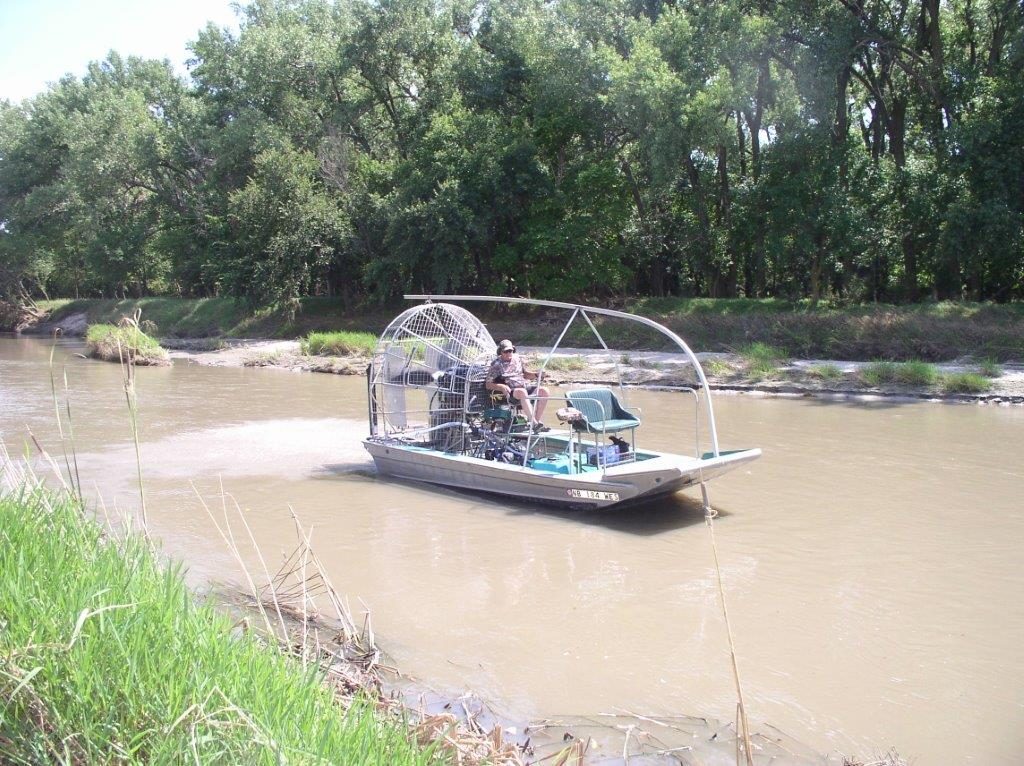New Vegetation Management and River Maintenance Concerns Arise
By Merle Illian, TVWMA Project Coordinator; Submitted by Todd Boller, NAISMA Board of Directors.
Across the country, high water has affected management. In Nebraska, weed management areas respond to wet conditions with new timelines and equipment.
“Vegetation management in the riparian area of the Lower Republican and Little Blue Rivers has been anything but normal this year. With the high and erosive water flows, it has become almost impossible to put our terrestrial spraying equipment into the river channel this year,” says Mark Goebel, Franklin County Weed Superintendent. “It has been one rainstorm event after another and the river flows never do subside. The latter part of August is when we usually put our all-terrain vehicles into the river and begin spraying noxious vegetation. This job starts at Cambridge, Nebraska and goes all the way to the Kansas-Nebraska state line south of Hardy, Nebraska. This is a 145-mile stretch of river that takes about a month. This year the river work will also be compounded by debris and logjams in the river.”
“Harlan County Dam will be releasing water flows at 1100 cubic feet per second this fall,” says Larry Janicek, Project Manager Harlan Co. Dam. “This will keep the river channel below the dam at full flow capacity. With the lake elevation at record highs, we will not be doing any spraying this year around the lake for invasive vegetation, because there is no exposed shoreline to contend with,” Janicek says.
“Twin Valley Weed Management Area (TVWMA) plans to hire an air boat this fall to do our spraying,” says Dennis VanWey, Webster County Weed Superintendent. “We hired Working Ecosystems, an aquatic vegetation spraying outfit with an air boat to make a trip down the Republican River to determine the severity of the noxious weeds and to see if the river is navigable from a debris and logjam stand point. This is the only way that we are going to be able to address the vegetation concerns on the river.”
“In addition to the vegetation concerns the river trip also revealed a tremendous amount of river bank sloughing and additional trees falling, creating logjams. This can create major problems with the debris accumulating under bridges and potential for river flows to alter their channel,” VanWey says.
Our members get a special newsletter round-up every quarter, with articles like this, NAISMA tips, and more. Become a member and join the movement:




